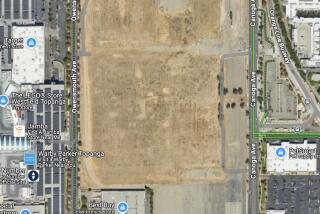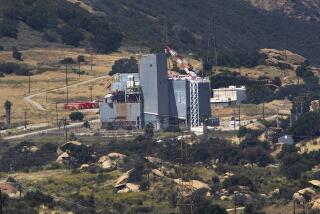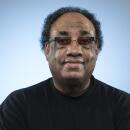Tour de Rockwell : Environment: The firm opens its Santa Susana facility to show that it is conducting nuclear research and rocket testing safely.
Rockwell International, criticized by neighborhood and anti-nuclear activists concerned about the safety of its nuclear research operations, dropped the veil of secrecy Saturday at its Santa Susana field laboratory, opening its gates to the public for the first time in more than 40 years.
Nearly 150 rain-soaked people toured the 2,600-acre facility west of Chatsworth in what officials called an effort to prove that the rocket testing and nuclear research at the site is being conducted in a safe, responsible manner.
“We’re doing this because there is an obvious need for us to reach out to the community and show that we operate in a safe manner,” said Pat Coulter, spokesman for Rockwell’s Rocketdyne Division. “We’re proud of what we do up here. This is a national asset, and we get a lot of calls from people wanting to know more about what we do.”
Rockwell has been the subject of accusations and negative publicity since the disclosure last May of a federal Department of Energy report that acknowledged the existence of chemical and radioactive contamination in the DOE portion of the Santa Susana site. The pollution has been described as mostly low-level, but the report greatly increased scrutiny of the facility and raised concern among area residents.
The three tours conducted on Saturday marked the first time since 1947--when Santa Susana was established as a rocket testing site--that the public had been allowed on the property.
Engineers and experts guided busloads of visitors through the rugged, scenic terrain, pointing out drab buildings and mammoth towers where engines for the Apollo missions and the space shuttle were built and tested. Roars from some of the engine tests have often been heard several miles from the location.
Large, round tanks that could hold half a million gallons of hydrogen gas loomed over the bus as it cruised the wet roads.
Also included on the tour was the nuclear “hot lab,” a heavily shielded workshop where nuclear fuel and other radioactive materials are handled by remote control.
The tour guides--Frank Will, manager of equipment engineering, and Gerry Gaylord, manager of facility programming at the company’s Energy Technology Engineering Center--assured passengers that most of the nuclear facilities on the site were inactive, and 97% of the radioactive contamination in the soil and building had been cleared away.
The hot lab is scheduled to be shut down in October after current work is completed.
Although the bus passed through most of the acreage of the test site during the hourlong tour, passengers were not shown the inside of any building and were not allowed off the bus until the end of the tour for a question-and-answer session with company officials.
At times, the tour resembled a visit to Universal Studios. Will pointed out two boulders on a hillside “that you may recognize. That’s where ‘The Six Million Dollar Man’ and ‘Wonder Woman’ were filmed.”
None of the activists who had criticized the work at the site attended the day’s first tour, even though a few said they were invited.
One activist, Don Wallace, called the tours “an outrageous public relations stunt.”
Another activist, Jon Scott, who had intervened in Rockwell’s license hearings before the Nuclear Regulatory Commission, said: “I would love to go in a way. I would love to have the concession on gas masks. All these folks want to do is do a song-and-dance about NASA and avoid the contamination part.”
Most of the passengers on the first tour were watchful but calm. When Coulter asked what everyone had thought of the tour, the group applauded.
John Weems, who lives in Dayton Canyon, said he had gone because he wanted to learn more about radiation and soil contamination. He said a neighbor had drilled a well near his house, and sodium contamination from the well had killed nearby trees.
“I wanted to know if the same kind of thing was happening here,” he said. “But it seems pretty safe. They took us to all the places I had read about in the newspaper, so they were pretty honest.”
Robin Barr, who went with her parents, said she was satisfied that the operation was safe but added, “I think they could build more wells up here so that the contamination could be cleaned up as they go along.”
Another passenger, Elaine Riley, said the safety of the operation was the least of her concerns.
“I just wanted to see the rock formations,” she said. “They were beautiful. Too bad this place isn’t open for hiking.”
More to Read
Sign up for Essential California
The most important California stories and recommendations in your inbox every morning.
You may occasionally receive promotional content from the Los Angeles Times.











